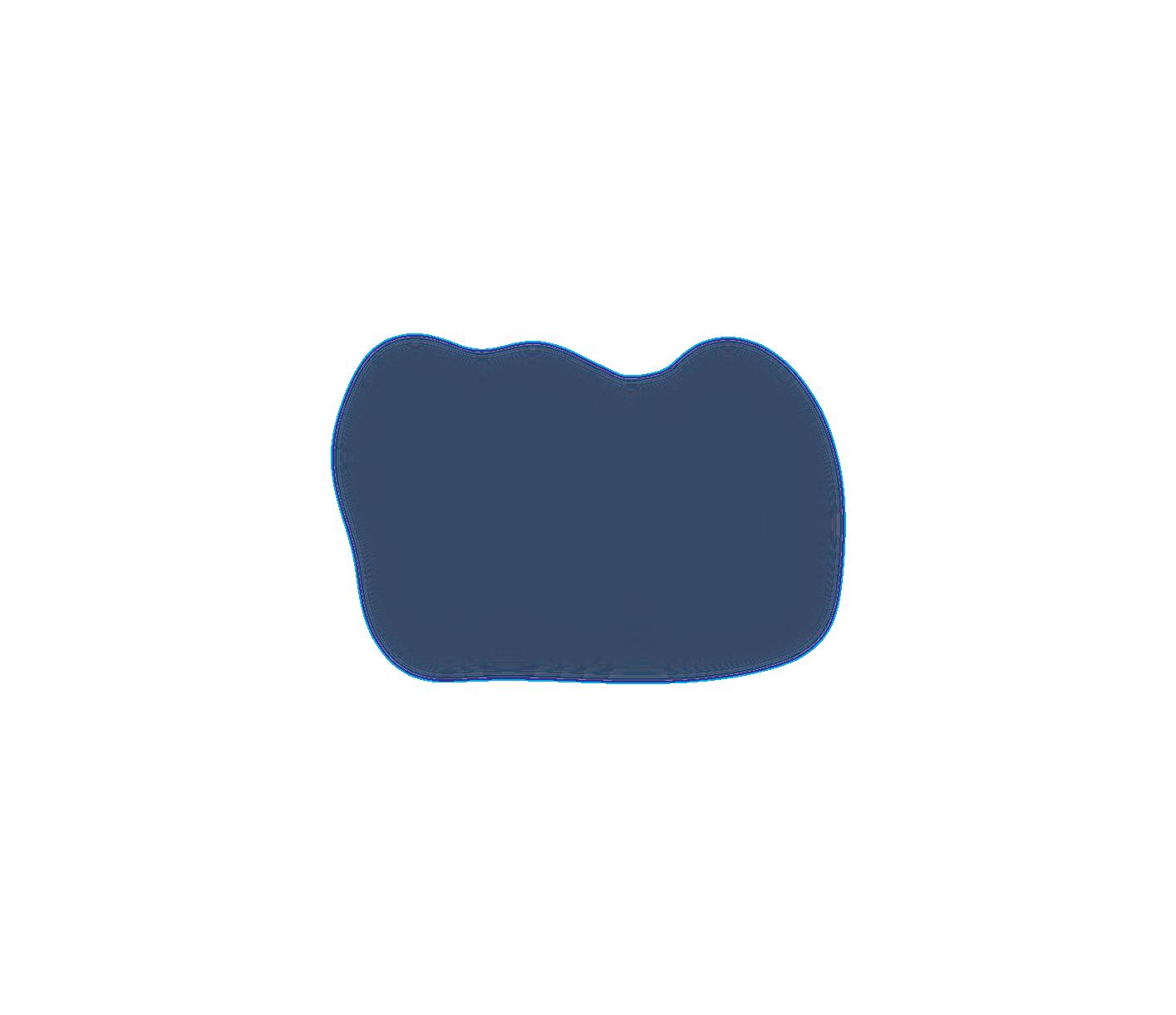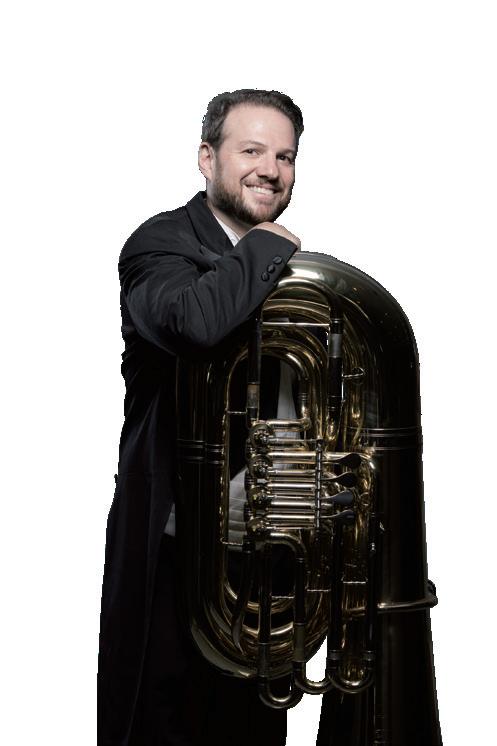
Grand Hall, Lee Shau Kee Lecture Centre The University of Hong Kong 香港大學李兆基會議中心大會堂 香港首演 HK DEBUT 18-19 FEB 2023
Lipkind 當代以色列大提琴翹楚 利普金 巴赫 無伴奏組曲全集
The Complete BACH CELLO SUITES Gavriel
Welcome to the Grand Hall
Thank you for coming to this HKU MUSE event. To ensure that everyone enjoys the music, please switch off your mobile phones and any other sound and light emitting devices before the performance. Unauthorised photography and audio/video recordings in the Hall are prohibited. Enjoy the concert and come again.
PRESENTED BY
D
FOLLOW US
SUPPORTED BY HKU MUSE
Consulate General of Israel in Hong Kong
The Complete BACH CELLO SUITES
Gavriel Lipkind, cello
Music in Words: Performing the Bach Suites
17 FEB 2023 | FRI | 7PM
The Complete Bach Cello Suites I
18 FEB 2023 | SAT | 8PM
Nos. 3, 2, 4
The Complete Bach Cello Suites II
19 FEB 2023 | SUN | 3PM
Nos. 1, 5, 6 at The University of Hong Kong
1
RTHK
4. The broadcast
be announced later
The two concerts are recorded by
Radio
details will
.
Gavriel Lipkind
Born in 1977 in Israel to a family of immigrants from Moscow, Lipkind enjoyed a stellar rise to fame in his early years and appeared in some of the world's most prestigious venues with orchestras such as the Israel Philharmonic, the Munich Philharmonic, and the Baltimore Symphony, working alongside outstanding musicians such as Zubin Mehta, Philippe Entremont, Giuseppe Sinopoli, Yehudi Menuhin, Pinchas Zukerman, Yuri Bashmet, and Gidon Kremer. Having graduated from three major academies on three continents and won more than a dozen top prizes in major competitions, Lipkind found himself at the pinnacle of his youthful achievements. The Frankfurter Allgemeine Zeitung wrote of him: "A new star ascends the cello sky […] The young Israeli cellist is one of the major musicians to have entered the music scene […]" (Ellen Kohlhaas, 1997)
In spite of his fulminant success as a young cellist, Lipkind decided aged 23 to take a sabbatical and focus wholly on the innermost aspects of his musicianship. With a Glenn Gouldian precognition he relocated into a small

2
village in the Taunus mountains near Frankfurt and spent the next three years working reflectively on his repertoire, liaising with composers and experimenting with new instrument setups. During this period Lipkind's lifelong fascination with recordings and the studio found fruitful ground. Concluding over three years of his active retreat he released among other recordings his rendering of Bach's Cello Suites. These recordings revealed a conceptual musician with his own compositional voice and a true expressive virtuoso with a deep knowledge of the cello. Shortly thereafter, a whole series of albums featuring major cello concertos, an album titled In Search of New Worlds showcasing the Lipkind Quartet as well as half a dozen recital programmes for live broadcast were released, putting Lipkind in a unique niche of his own.
160,000 sold copies of exclusive editions and four reprints later, these recordings have long become celebrated jewels and collector's items in the music world. Off stage, Gavriel Lipkind inspired hundreds of cellists, string players, and ensembles around the world by sharing his modus vivendi in masterclasses and organising special retreat courses for musicians.
Over the past year Lipkind was often referred to by the press as "The Cello Maverick". His touring with outstanding orchestras and conductors such as the Mariinsky Theatre under Valery Gergiev, Brussels Philharmonic under Anthony Wit and Michel Tabachnik, and Tokyo Metropolitan under Eliyahu Inbal—became a small part of a rich spectrum of activities.
At the age of 40, Gavriel Lipkind has taken the most daring step in his career to date. Convinced that producing sleek video content of great performances is key to the future relevance of classical music, Lipkind moved to the Netherlands and took over a famous monumental building in the heart of the old city of Utrecht. He established ConcertLab.com—a media corporation that operates a new kind of concert venue that is specialised in filming acoustically performed recitals. Hundreds of top artists will soon come to be filmed at ConcertLab in a new innovative way.
Gavriel Lipkind plays a unique Italian cello labelled "Aloysius Michael Garani (Bologna, 1702)" estimated, however, to have been completed in the years 1670-1680; an enigma which has come to be known as "The Zihrhonheimer cello". This instrument has been made available thanks to the generous support of D. & M. P.
3
GAVRIEL LIPKIND THE COMPLETE BACH CELLO SUITES



4
Music in Words with Gavriel Lipkind: Performing the Bach Suites


17 FEB 2023 | FRI | 7PM
Rehearsal Room, LG1/F, Run Run Shaw Tower, HKU
Moderator: Prof. Daniel Chua, Department of Music, HKU
"Bach's cello suites were the first music I ever tried to play on the cello. Coming from a non-musician family of Bach devotees and baroque enthusiasts, there was always a sense of a scientificspiritual-human truth to be discovered in the music of the 'Supreme Master'. This music never mixed with any other."—Gavriel Lipkind
Before his Hong Kong Debut, Gavriel Lipkind has a conversation with Prof. Daniel Chua, detailing his journey with the Bach Suites and sharing his insights on performing and recording the magnificent work.
5
GAVRIEL LIPKIND THE COMPLETE BACH CELLO SUITES
The Complete Bach Cello Suites I
18 FEB 2023 | SAT | 8PM
Grand Hall, Lee Shau Kee Lecture Centre, HKU
Suite No. 3 in C major, BWV 1009
Prélude
Allemande
Courante
Sarabande
Bourrée I & II
Gigue
Suite No. 2 in D minor, BWV 1008
Prélude
Allemande
Courante
Sarabande
Menuet I & II
Gigue
- INTERMISSION -
Suite No. 4 in E-flat major, BWV 1010
Prélude
Allemande
Courante
Sarabande
Bourrée I & II
Gigue
6
The Complete Bach Cello Suites II
19 FEB 2023 | SUN | 3PM
Grand Hall, Lee Shau Kee Lecture Centre, HKU
Suite No. 1 in G major, BWV 1007
Prélude
Allemande
Courante
Sarabande
Menuet I & II
Gigue
Suite No. 5 in C minor, BWV 1011
Prélude
Allemande
Courante
Sarabande
Gavotte I & II
Gigue - INTERMISSION -
Suite No. 6 in D major, BWV 1012
Prélude
Allemande
Courante
Sarabande
Gavotte I & II
Gigue
7 PROGRAMME
NOTES
J.S. BACH
Six Cello Suites
BWV 1007-1012

JOHANN SEBASTIAN BACH (1685-1750)
It is generally believed that Johann Sebastian Bach wrote his six Cello Suites during his time in Köthen, east Germany in 1717-23. In those years Bach worked as Kapellmeister for Leopold, Prince of Anhalt-Köthen, and produced a number of instrumental works: Sonatas and Partitas for Solo Violin, the 'Brandenburg' Concertos, probably some of The Well-Tempered Clavier, and more. While we can be rather certain that Bach was a skilled violinist, a harpsichordist, and an organist, no convincing evidence suggests that Bach played the cello, at least professionally and publicly. Nor do we have documented evidence as to why Bach composed the Suites for an unaccompanied cello. It is speculated that Bach wrote the six Cello Suites for either of the two men with whom he worked in the Köthen court orchestra: Christian Ferdinand Abel, a master gamba and violoncello piccolo (the latter is more like a gamba than a modern cello) player, or Christian Bernhard Linigke, a cellist in the orchestra.
Bach's original manuscripts for the Cello Suites have unfortunately been lost. A foray into the extant copies generates both windows for artistic interpretation and headaches for musicians, in that they were distinctly different from one another. There are generally four extant manuscripts. Anna Magdalena, Bach's second wife, and the organist Johann Peter Kellner whom Bach knew, each copied Bach's original manuscript during Bach's lifetime. In the second half of the 18th century after Bach's death, Johann Nikolaus Schober and an anonymous copyist prepared one manuscript, and one more manuscript, again anonymously copied, was probably commissioned by C.P.E. Bach's daughter, Anna Karoline Philippina Bach.
One of the profound consequences of having multiple origins of the music is the uncertainty of articulation. It is well known among cellists that Magdalena's manuscript is as confusing as it is thought-provoking. If we observe Bach's own manuscripts for his Sonatas and Partitas for Solo Violin, he was rather consistent in his articulation, especially bowing, when it comes to sequential figures, or restatements of a particular musical passage.
Magdalena's manuscript, however, suggests a different compositional habit. In reading her manuscript, it is often unclear to performers when slurs begin and end, and bowings are irregular even when the same musical passages repeat. Still, Kellner's and others' manuscripts provide different performance directions than Magdelena's.
9
GAVRIEL
THE COMPLETE
LIPKIND
BACH CELLO SUITES





10
But perhaps, as listeners, we can see the oversupply of origins of music as an opportunity for an appreciation of the performer's decisions. Apart from the articulation issue discussed above, bowing technique is another concern. It is thought that the cellists with whom Bach worked may have used the underhand bowing technique, that is, holding the bow from beneath. This piece of historical evidence is crucial, in that an underhand bowing technique—with a Baroque bow—complicates the now common pairing between the direction of the bowing and the relative weight of the sound produced. It reverses the correlation that a downbow produces a weightier sound, while an upbow a lighter sound. All this is to suggest that as listeners, we might appreciate the performer's decisions against the historical context in which the manuscripts were produced.
The genre 'suite' refers basically to any ordered set of instrumental pieces that is intended to be performed in a single setting. In the Baroque period, it usually comprises various forms and styles of dance music in the same key. A classic schema of the German instrumental suite consists of four dance types: allemande, courante, sarabande, and gigue. Allemande is a German stately dance in duple meter; courante—literally means running—usually consists in leaps and fast-running passages, and is usually in binary form and triple meter; sarabande originates from a sung dance in Latin American and Spain, and is usually set in slow triple meter in balanced four-bar phrases; gigue originates from the popular dances in the British Isles, and is usually set in compound meters and fast tempo.
Bach's six Cello Suites follow the traditional schema of the German instrumental suite, but are set in a six-movement structure. They begin with a prélude before the allemande. Between the sarabande and the gigue Bach also inserted pairs of menuets (Suites Nos. 1 and 2), bourrées (Nos. 3 and 4), or gavottes (Nos. 5 and 6), which are commonly conceived of as a single movement. With this in mind, one thing to listen for in the concerts is how Bach—and Lipkind—choreographed distinctly different musics with the same dance types.
Unlike his violin works, Bach did not use an abundance of four-note chords and complex contrapuntal textures for his Cello Suites, but explored the sonic possibilities of the instrument through various music choreographies. Bach wrote Suite No. 5 in C minor, for instance, in scordatura (Italian for "discord"), meaning specifically that the player has to tune the high A string down into G.
11 GAVRIEL LIPKIND THE COMPLETE BACH CELLO SUITES
The result is that the cello will have open strings, from low to high, C, G, D, G, which generate a more sonorous resonance than the common C, G, D, A. Not all cellists play in scordatura in a concert, especially when they have to perform two or more Cello Suites in one setting. Another notable example is Suite No. 6 in D major, which Bach allegedly wrote for a five-string violoncello piccolo, with the fifth string being E. To say that the prélude is difficult to play on a fourstring cello is an understatement, given that the music often leaps to the open E string that the instrument lacks. If the music sounds effortlessly produced, the cellist deserves much admiration.
Bach's Cello Suites were almost completely forgotten for more than a hundred years after his death. To say that they were a 20th-century phenomenon is not an exaggeration.
Programme notes by Edwin Li
BA in Music, HKU PhD in Music Theory, Harvard University
12







14
15

16






A SOURCE OF INSPIRATION 繆思樂季 | 啟迪妙思 muse.hku.hk

























